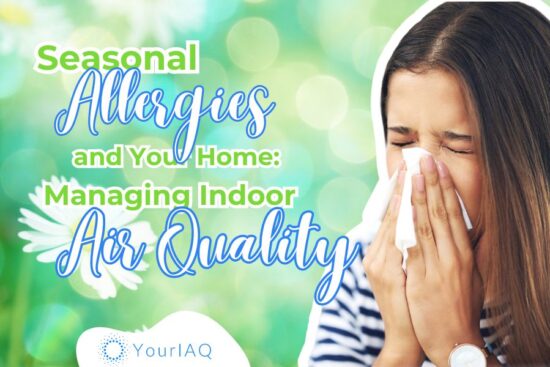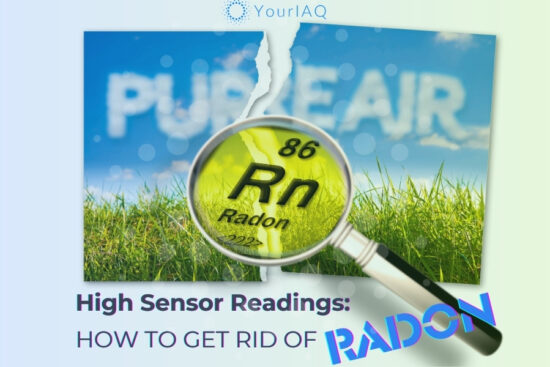
In an era marked by uncertainty and concern surrounding COVID-19, the quality of indoor air is a topic of increasing importance. In the wake of the pandemic, it’s crucial to address a pressing question: should you worry about COVID-19 transmission through indoor air? This blog post delves into the facts to provide a clearer understanding of the risks and precautions associated with indoor air quality and COVID-19.
Understanding Covid-19’s Presence in Indoor Environments
You’ve likely heard discussions around “covid 19 and indoor air quality.” To demystify, when someone with the virus coughs, sneezes, or even just talks, they release respiratory droplets. In confined and poorly ventilated spaces, these droplets can linger in the air longer than we’d like. This creates the risk of airborne viral transmission.
The Significant Connection: Indoor Air Quality and Covid
Research robustly emphasizes the impact covid has on indoor air. If you’re in an environment with poor air quality, the concentration of the virus in the air can potentially be higher. It’s this direct connection that makes indoor air quality a vital component of COVID-19 safety protocols.
How Long Does Covid Stay in the Air?
Based on research from leading healthcare organizations and supported by numerous scientific associations, the COVID-19 virus can stay airborne from just a few minutes up to several hours. Factors like room temperature, humidity, and airflow all play roles in this duration. A clear understanding of this can better equip you to handle indoor situations.
Source: https://www.epa.gov/coronavirus/indoor-air-and-coronavirus-covid-19
Setting Realistic Expectations: Covid-19 in Indoor Air
It’s natural to be concerned about the air in your personal and shared indoor spaces. However, while the potential risk exists, it’s manageable. Knowledge, backed by data on indoor air quality, can help in making calculated decisions rather than acting out of uninformed fear. Start by taking a few simple steps to safeguard your indoor air quality.
Practical Steps for Maintaining Safe and Healthy Indoor Environments
- Optimize Ventilation: Regularly allow fresh air in by opening windows and doors. It’s a simple yet effective way to dilute all potential contaminants.
- Invest in a Good Air Purifier: High-quality air purifiers can be instrumental in reducing airborne pathogens, including certain viruses.
- Uphold Sanitary Practices: Clean and disinfect surfaces routinely. It’s not just about the air; surfaces play a role too.
- Practice Respiratory Etiquette: Cover your mouth and nose with a tissue or your elbow when coughing or sneezing to prevent the release of respiratory droplets that may contain the virus.
- Stay Abreast of Updates: Monitor updates from government and health agencies. Adapting to new guidelines can make a significant difference.
Empower Yourself Through Knowledge, Not Hype
Knowledge truly is power, especially in challenging times. While the COVID-19 pandemic created changes across many aspects of our lives, it’s important to remember that prevention and treatment of the virus has come a long way since 2020. Equipped with the right information and by taking pragmatic steps, you can ensure the safety and well-being of your loved ones without succumbing to undue panic.
Frequently Asked Questions
How does COVID-19 primarily spread in the air?
Through respiratory droplets from infected individuals during coughing, sneezing, or talking.
Is there a strong correlation between poor indoor air quality and increased COVID-19 transmission?
It depends. While poor indoor air quality doesn’t inherently introduce the COVID-19 virus, it can create conditions that facilitate transmission when an infected person is present.
Which strategies can help in enhancing my indoor air quality?
Regular ventilation, employing air purifiers, and diligently following cleanliness protocols can make a substantial difference.
How effective are air purifiers against COVID-19?
The SARS-CoV-2 virus is too small to be captured by most air purifying devices. However, viral particles are typically carried on moisture droplets or aerosols, which are captured by air purifiers. While no solution can claim 100% virus removal, good quality air purifiers can significantly reduce the concentration of airborne contaminants.
For how long does COVID-19 stay suspended in indoor environments?
Depending on various factors, the virus can remain airborne from a few minutes to a couple of hours.
Read more:







